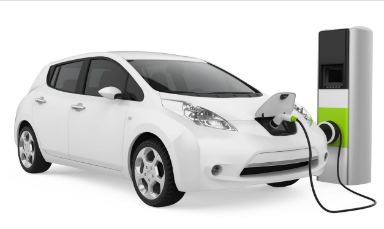Recently, the author noticed that the NVXK2KR80WDT, NVXK2TR80WDT and NVXK2TR40WXT 1200 V EliteSiC MOSFET modules launched by ON Semiconductor can improve the performance of the car charger. Let's take a look at the characteristics of this combination product.
ON Semiconductor's NVXK2KR80WDT is a Vienna Rectifier Module integrating a 1200 V 80 mΩ EliteSiC MOSFET with SiC and Si diodes mounted on an Al2O3 ceramic substrate. The NVXK2TR80WDT is a dual half-bridge module featuring 1200 V 80 mΩ EliteSiC MOSFETs mounted on an Al2O3 ceramic substrate.

The ON Semiconductor NVXK2TR40WXT is a dual half-bridge module with 1200 V 40 mΩ EliteSiC MOSFETs mounted on an AlN ceramic substrate for increased current handling capability without the need for three circuits in parallel, or three NVXK2KR80WDT modules can be used to Implements a three-phase Vienna rectifier, with each module handling one phase. For the second stage, DC/DC converters (two NVXK2TR80WDT modules or two NVXK2TR40WXT modules) form the primary side and secondary side bridges of the CLLC resonant converter. This topology reduces overall component count and improves efficiency, with approximately 50% fewer components. 22 kW systems can also apply this topology.
Engineers can use a series of modules instead of discrete components to simplify the design while ensuring a compact design with high power density. Modules reduce complexity by integrating the design of discrete components, reducing design and assembly effort for the OBC manufacturer while providing higher reliability.
ON Semiconductor also offers a broad portfolio of power devices that simplify engineering and offer different trade-offs, giving engineers greater flexibility. For example, the NVXK2xx80WDT has an RqJC of 1.84°C/W (temperature rise per watt) compared to the NVXK2xx40WXT's RqJC of 0.47°C/W. While the xx80WDT generates more heat, it is smaller and less expensive than the xx40WXT, which has better heat dissipation. This enables developers to choose the right device to match the power rating for a specific application and make trade-offs between size/cost and heat dissipation.
Note that comparing the RqJC of a module to the RqJC of a discrete component is not a one-to-one comparison. The module already has an embedded electrical insulation layer which must be added to the discrete scheme. In addition, comparable components in discrete packages have external and internal thermal interfaces with much higher temperature rise than discrete components alone.
Another factor to consider is the profile. Due to the possible level of integration, the clearance of the modules is much better than discrete solutions. For example, IEC-60664-1 requires packages to have a clearance of at least 5.0 mm. Selecting modules ensures that clearance requirements are met while simplifying engineering.
about load balancing
A typical charging scenario is for a driver to charge an EV overnight after returning home from get off work. As more EVs hit the road, a major challenge for utilities will be load balancing demand. Research is currently underway to create a coordinated smart grid, including coordination at the national and global levels. One potential strategy, for example, is for utilities to use EV batteries in different locations at different times to help keep the grid stable enough to meet peak EV charging demand.
One of the advantages of these new SiC-based topologies is that they are bidirectional and, when introduced, will likely be able to support various coordinated smart grid strategies. This capability helps future-proof designs as evolving regulations introduce new capabilities that existing EV architectures simply cannot handle.
Bidirectional OBCs also enable electric vehicles to act as home emergency generators. For example, after a heavy snowfall caused a power outage, a household with an EV could use the EV to power basics like heaters and lights with up to 60 kWh, depending on battery capacity. As the technology improves, electric vehicles could serve as generators in a variety of occupational scenarios, such as providing electricity on remote construction sites.
ON Semiconductor is the first to introduce automotive-qualified SiC-based power modules for on-board charger applications. With 15 years of experience in volume production of SiC modules, ON Semiconductor has a proven track record and long history of delivering value and quality to customers.
ON Semiconductor is also one of the few SiC manufacturers with a fully integrated supply chain. From SiC ingot growth, to wafer fabrication, to modules and discrete devices, ON Semiconductor has its own in-house SiC fabrication and assembly processes to ensure high quality standards for power devices. ON Semiconductor is not only an end-to-end SiC supplier, but also possesses operational excellence and rapid response.
Next-generation on-board chargers need to handle high voltages and increasing switching frequencies to deliver the efficiency and power density required by automakers. Silicon carbide technology enables new topologies, enabling power supply engineers to meet these new requirements while reducing the size, weight, cost and complexity of OBCs. With a comprehensive power supply portfolio, ON Semiconductor can help accelerate OBC designs, provide developers with application flexibility, and create future-proof designs to adapt to changing regulations and support new applications.
About ON Semiconductor
ON Semiconductor (Nasdaq: ON) is driving energy efficient innovations, empowering customers to reduce global energy use. The company offers a comprehensive portfolio of energy efficient power and signal management, logic, discrete and custom solutions to help design engineers solve their unique design challenges in automotive, communications, computing, consumer, industrial, LED lighting, medical, military/aerospace and power supply applications. ON Semiconductor operates a responsive, reliable, world-class supply chain and quality program, and a network of manufacturing facilities, sales offices and design centers in key markets throughout North America, Europe, and the Asia Pacific regions.

